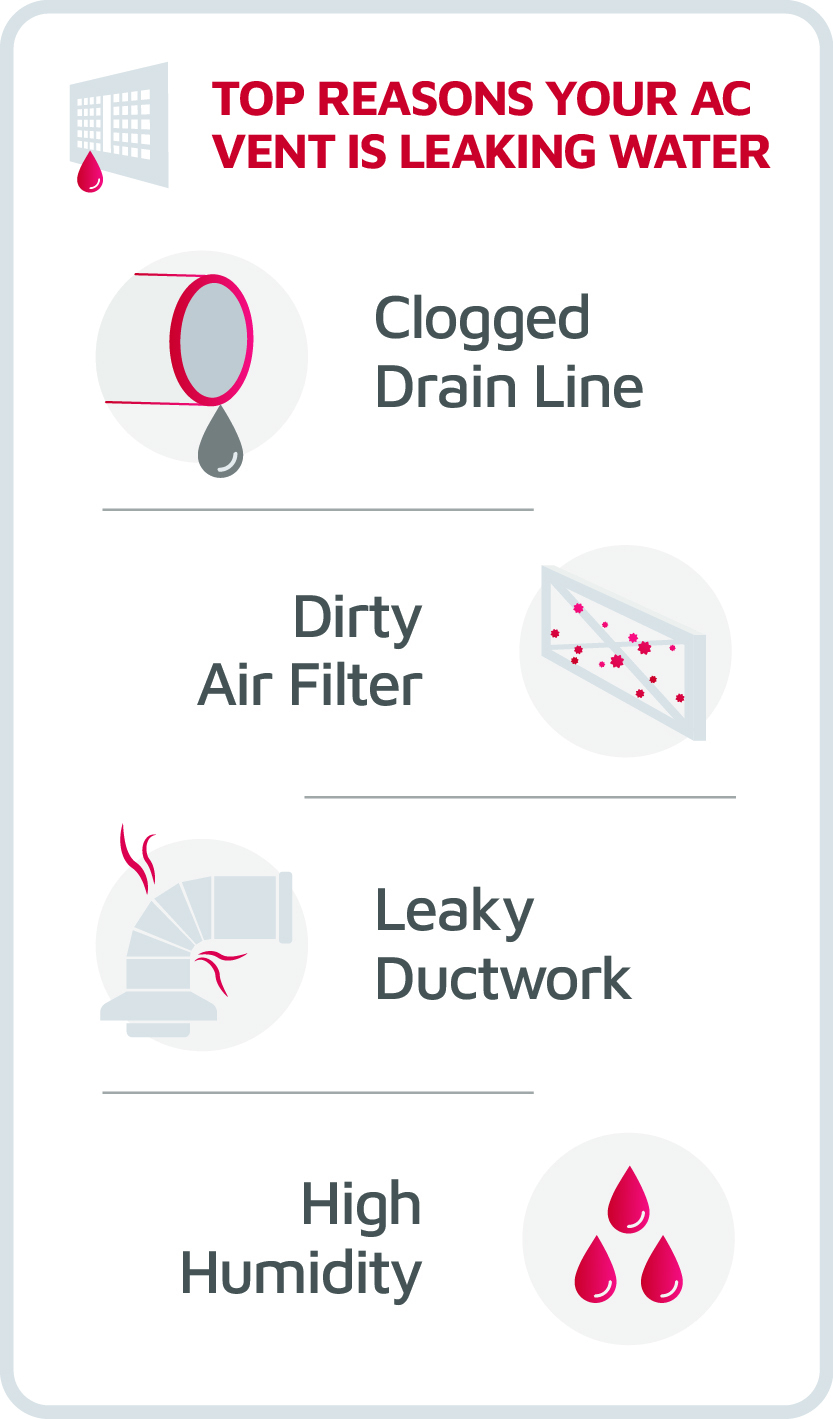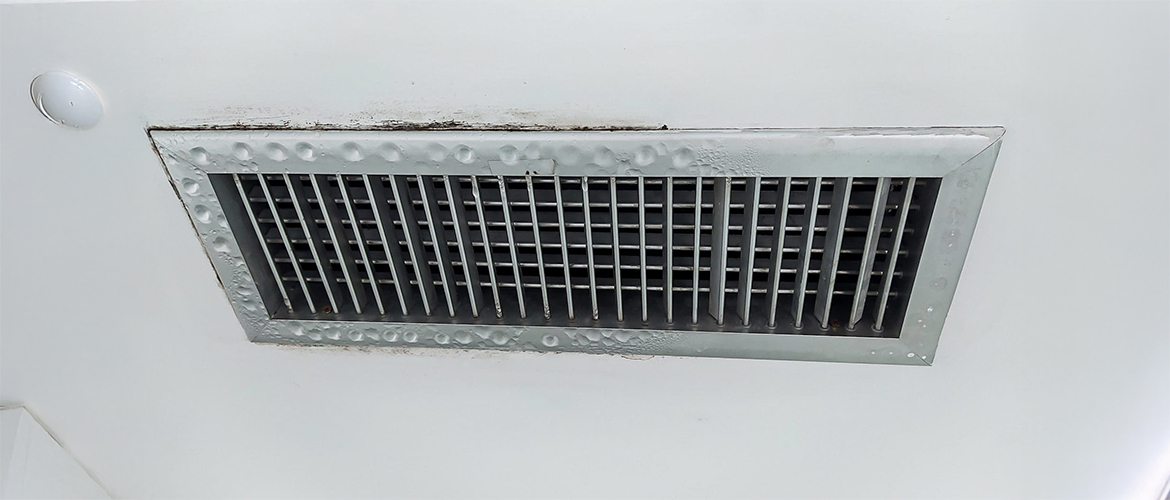Causes, Fixes, and When to Call a Pro
Have you seen water dripping from your AC vent? While a little condensation might seem harmless at first, ongoing drips could be a sign of a deeper issue that needs attention. Ignoring it may lead to water damage, stained ceilings, mold growth, structural damage, or costly HVAC repairs down the line. Whether you're dealing with this issue now or want to stay prepared for the future, understanding the root causes can help you act fast and avoid bigger problems.
Why Water Drips from AC Vents
It’s normal for your air conditioner to deal with moisture, especially in humid climates. That’s because one of the air conditioner’s key functions is removing excess moisture from indoor air. But when something in the system goes wrong, that moisture can end up in the wrong place - like dripping from a vent.
Here’s how it’s supposed to work:
-
- Your AC pulls warm, humid air from your home.
- The air passes over cold evaporator coils, where it cools and sheds moisture.
- That moisture (now condensation) drains out through a condensate drain line.
- The cooled, dehumidified air gets pushed back through your vents.
If any part of this process breaks down, condensation can collect and eventually find its way to your vents.
Top Causes of Water Dripping from Your AC Vent
Here are the most common culprits behind water dripping from vents:

- Clogged Condensate Drain Line
This is one of the most frequent causes. If the drain line becomes clogged with dirt, algae, or debris, water backs up in the system and can overflow near ducts or vents. In some cases, it may leak into your ceiling. - Dirty Air Filters
A dirty air filter restricts airflow, causing the evaporator coils to get too cold. That excess cold can result in ice formation, which eventually melts and drips into areas it shouldn't—like your vents. - Leaky or Unsealed Ductwork
If there are gaps in your ductwork or poor insulation in your attic, warm air can meet cold duct surfaces and create condensation. Over time, this moisture builds up and drips through the ceiling or vents. - Poor Ventilation or High Humidity
In some cases, homes with high indoor humidity or poor airflow can experience condensation around metal vents. This is especially common in bathrooms, kitchens, or other moisture-heavy spaces.
How to Identify the Source of Water Dripping
Before panic sets in, here are a few things you can do to assess the situation:
Look for Signs of Water Damage
Be on the lookout for signs of water damage like stains or discoloration around ceiling vents, bubbling or peeling paint, and mildew or mold growth - especially near attic spaces.
Check the Air Filter
Remove and inspect your AC filter. If it’s dirty, replace it with a new one. This is a simple step that often solves airflow-related condensation problems.
Inspect the Drain Line
If you’re comfortable doing so, check if your system’s drain line is clogged. Look near the indoor air handler (typically in an attic, closet, or basement) for signs of standing water. If you see any, it's time to act.
Schedule an AC Tune-Up
A routine tune-up includes cleaning the coils, clearing the drain line, inspecting ductwork, and checking refrigerant levels - all of which can help prevent moisture issues.
Preventative Measures to Stop Water Dripping
Like many HVAC problems, water dripping from your vent is easier (and cheaper) to prevent than repair.
-
- Replace Air Filters Regularly
Aim to change your filter every 1 to 3 months, depending on manufacturer recommendations and your home environment. - Schedule Routine Maintenance
A professional HVAC technician will inspect and clean your entire system, including clearing condensate lines and checking for hidden issues. - Insulate Your Ducts
Especially in hot, humid climates or unconditioned attics, insulated ducts can prevent warm air from causing condensation on cold duct surfaces. - Keep Vents Clear
Make sure no furniture or drapes are blocking airflow at your vents. Good airflow prevents moisture buildup and keeps your system running efficiently.
- Replace Air Filters Regularly
When to Call a Professional
While minor condensation near a vent isn’t always an emergency, visible water dripping or pooling definitely is. Here’s when to pick up the phone:
-
- You see active leaks or water damage near the vents.
- There’s visible mold or mildew.
- Your AC unit is running but not cooling properly.
- You’ve already replaced the filter and still see dripping.
- You suspect a clogged drain line but can’t access it safely.
Professional HVAC technicians have the tools and experience to safely clear clogs, seal duct leaks, and inspect for system-wide issues that could lead to costly repairs or even system replacement if ignored.
How Lennox Can Help
Lennox offers a full line of high-performance HVAC systems engineered for efficiency, durability, and humidity control. With advanced features like variable-speed airflow, smart thermostats, and integrated humidity control, these systems are designed to reduce the likelihood of condensation issues from the start.
Pair that with regular maintenance from a Lennox-certified dealer, and you’ll enjoy peace of mind knowing your system is protected against both discomfort and water damage.

